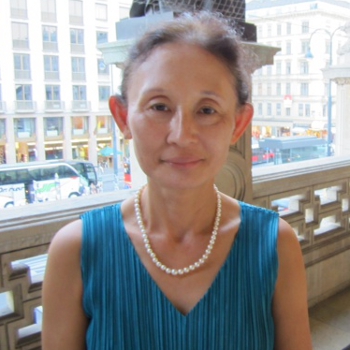The last time Karl Goldmark’s The Queen of Sheba was given in New York was a concert performance in 1970, after a long hiatus since a 1906 Metropolitan Opera performance. The first US tour of the Hungarian State Opera includes this rarity, and it was a treat to experience the most famous work of a little known Hungarian composer whose life (1830-1915) overlaps the transition from Romantic to Contemporary periods of music and yet whose work is firmly grounded in Romanticism. Richard Wagner’s influence was clear throughout, from dynamic overture, hints of leitmotifs and chromatic lines in the music.
The main plot (liberetto by Salomon Hermann Mosenthal) revolves around a love triangle between the Queen of Sheba, King Solomon’s ambassador, Assad, and his finance, Sulamith, on the occasion of the Queen’s visit to the King’s court in Jerusalem. The opera ends with Assad’s death, after repentance for his brief infatuation with the Queen and forgiveness by Sulamith. We have here an element of Tristan und Isolde, Lohengrin, and Tannhäuser, both in storyline and musical elements. And yet Goldmark succeeded in creating a unique opera with well delineated characters, rousing chorus, ballet interludes and fiendishly difficult arias.
Eva Szendrenyi's set designs consisted of Solomon’s palace and an unspecified nature scene. A Hungarian friend informed me that in Budapest’s opera house, the two scenes revolve on a platform. In New York's Koch Theater, each scene change necessitated a curtain to come down. During the overture, a dancer wearing a crown moved with the music in front of a black curtain lit up with stars. The curtain opened to reveal the court, with tall wide stairs on stage right for visitors to the palace to enter. The entrance of the Queen of Sheba was grand indeed, preceded by her “gifts” of exotic animals, all played by dancers in colorful costumes complete with horns and tails. The costumes were made with great care and creativity for the principal singers as well as for the chorus. Colorful lighting was another strong point, creating an appropriate atmosphere for each scene. The “nature” scenes – the palace garden and the desert – were several rocks placed in front of a curtain mid-stage. The simple and intimate staging was effective as it was possible to focus on the inner thoughts of the characters as they struggled with their emotional turmoil.
What was striking about many of the singers, especially of the three principals, was the purity and clarity of their voices which projected with ease over the orchestra. Tenor Boldizsár László possessed an impeccable technique as Assad, which enabled him to sing on pitch with razor-sharp precision, including thrilling high Cs. His timbre was lyric and yet it shone with beauty and power. His German diction was excellent, and his acting was heartfelt as he struggled with conflicting love and loyalty. Soprano Eszter Sümegi, his fiancee Sulamith, had some pitch issues and was a bit shrill in her first aria; her voice soon gained warmth and precision, and she was a lovely presence on stage as a distraught but steadfast support for her lover, trying to save him from his mad infatuation with the Queen. As the femme fatale herself, Erika Gál was a young and attractive Queen, her mezzo-soprano alternating between authority and seductiveness. Eszter Zavaros, as her maid Astaroth, was outstanding in her brief unaccompanied solo in Act 2 to lure Assad to her mistress, singing with exotic charm. Other standouts included Zoltán Kelemen’s King Solomon, who sang with power and compassion as the wise king.
The Hungarian State Opera Orchestra played with skill and relish, with standout performances coming from the woodwinds. One weak link in the otherwise enjoyable performance was the slow and unchanging tempo adopted by the conductor János Kovács. His direction was precise and assured, but did not capture the emotional compulsion and dynamic variety in the score. Coupled with static stage direction, where soloists and chorus were left to their own devices, it was a pity that the work of an unknown but talented composer did not receive a more precise musical treatment. Nevertheless, this was an evening full of excitement for the New York audience to experience these rare visitors from the land of the Magyars.


